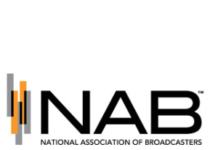
The Radio Advertising Bureau and Borrell Associates have released new data that says digital revenue hit $1.1 billion for radio in 2020, an increase of 12% over 2019. They are also predicting digital will grow another 18% in 2021. The $1.1 billion accounts for 14% of radio’s overall ad revenue.
The annual report showed that the average station made $290,150 in digital revenue in 2020, and the average market cluster made $1.3 million. The average revenue for the top five performers ranged from $2 million for top-performing clusters in the smallest of markets, to $17.8 million in the largest.
“The due diligence the radio industry has put into expanding its digital platforms and advertising offerings over the last few years contributed mightily to the 2020 bright spot of digital growth,” RAB President and CEO Erica Farber said. “As broadcasters continue to super-serve their listeners and advertisers, RAB is poised to help in the conversation with its business and professional development offerings to meet the innovation and opportunities ahead in 2021.”
“The pandemic actually delivered a gift to the radio industry last year,” Borrell Associates CEO Gordon Borrell said. “Stations saw very clearly how digital products can be a linchpin, especially when core-product sales are challenging. Digital kept the conversation going.”
The findings are a part of RAB and Borrell’s ninth annual report, “Defying the Gravity of 2020, Radio’s Digital Sales Rise 11.8%.” The full report is available to RAB members on RAB.com: Click here. A live-video presentation featuring the survey results will be presented by RAB and Gordon Borrell at noon CT on Wednesday, February 10. RAB members and survey participants can register for free here.










The stat I’d like to see is how much over the air broadcast ad revenue has declined over the past few years.
In many cases AEs are playing the shell game, moving traditional ad revenue over to digital because of the pressure to increase digital. If this weren’t the case overall revenue would be higher over the past 5 years, not down.
It’s in the report, first chapter, pages 7 and 8 (there are two charts delineating this). I’ve found the radio industry remarkable open to dissecting pain points like this and developing a game plan. Regarding the shell game, what you’re talking about is actually a viable strategy employed by all types of media, not just radio, to retain and grow their customer base. The choice is to sit and remain a radio station, or to participate in the market’s transformation and growth. Go back 100 years and you’ll see it in place as well, as blacksmiths continued to serve a slowly declining business while simultaneously participating in the growth of a new one. They installed gas pumps, learned how to repair gasoline-powered engines, and fixed car chassis. The stubborn remained blacksmiths and devolved into boutique craftsmen (search Google images for blacksmith shop and you’ll see what I mean), some became gas stations (Google Farrington’s blacksmith gas station for the story of one that still exists today), and some actually became car dealerships. In the end, the only ones that grew their businesses were the ones who chose to participate in that shell game.